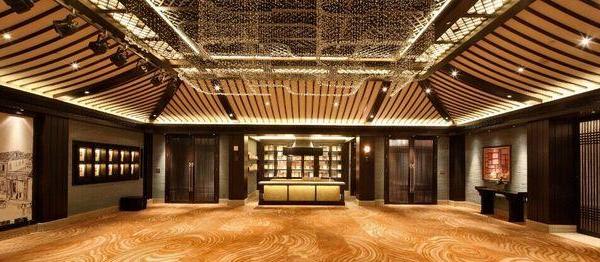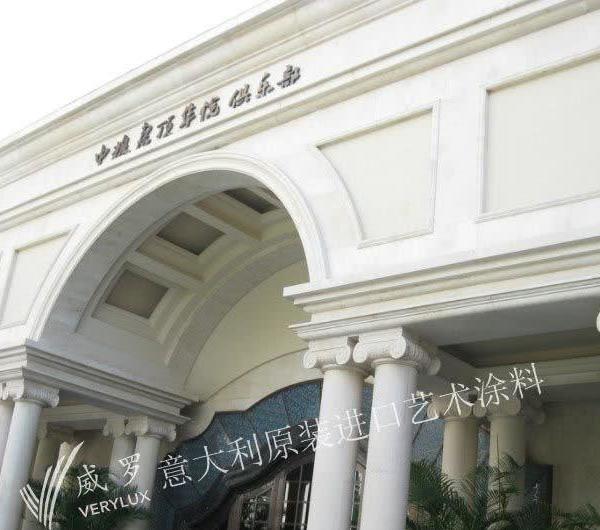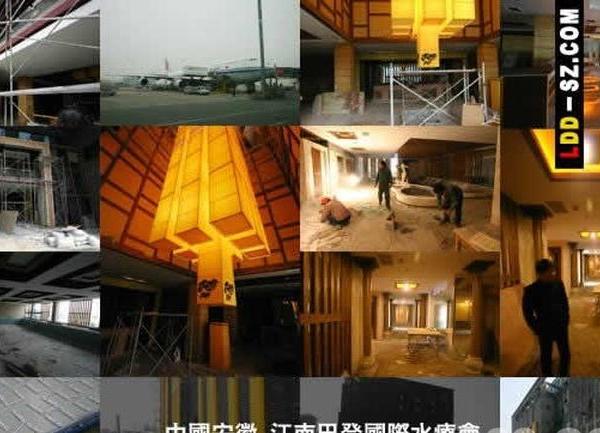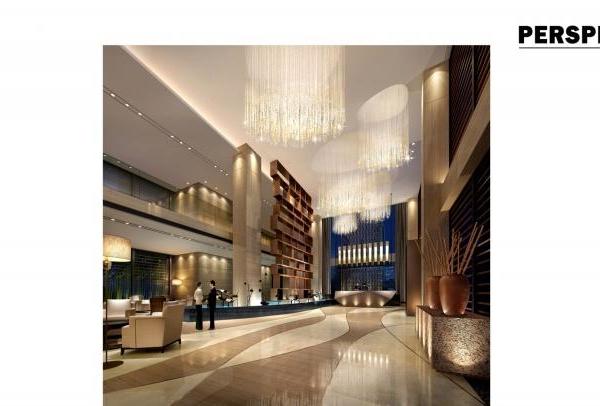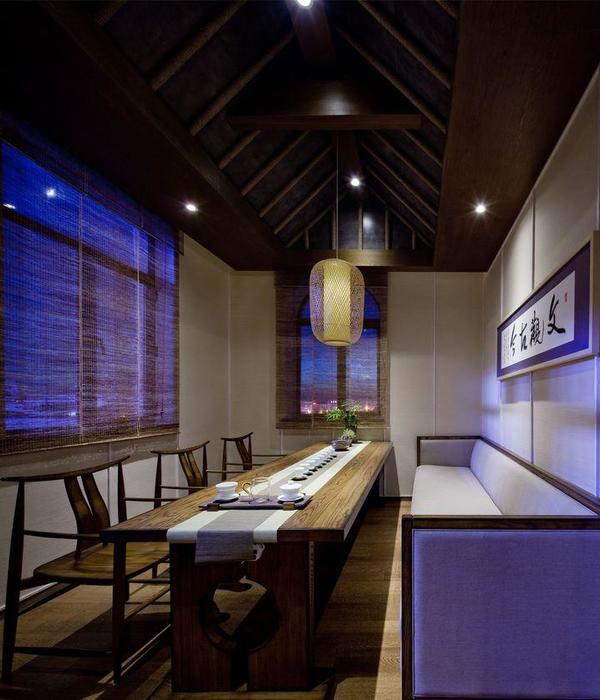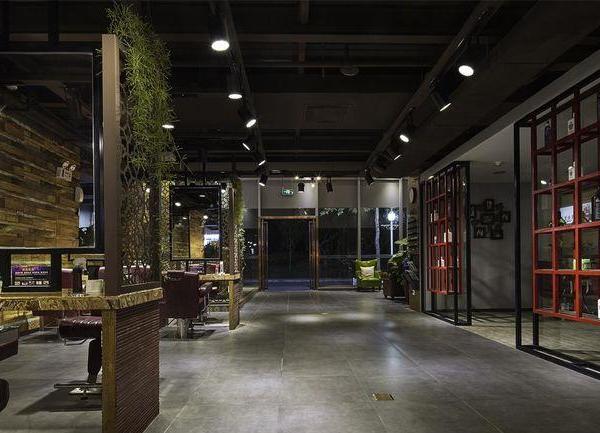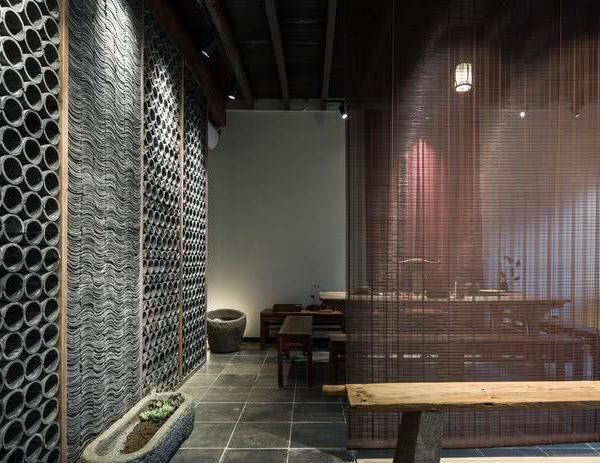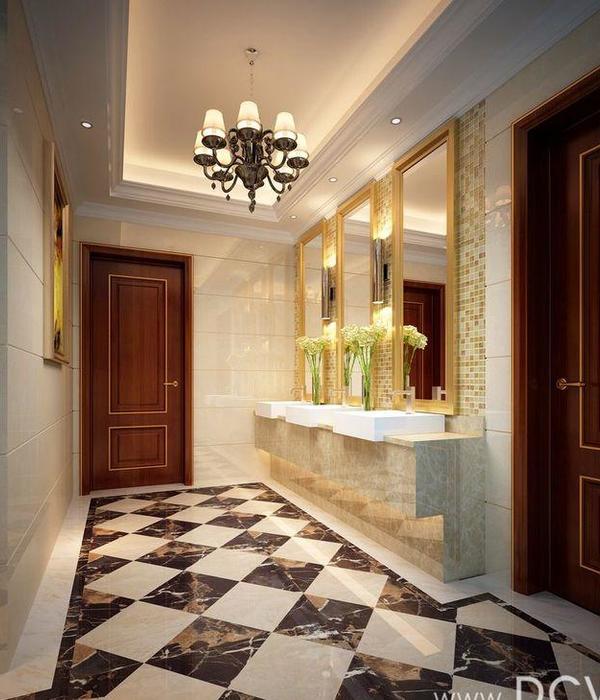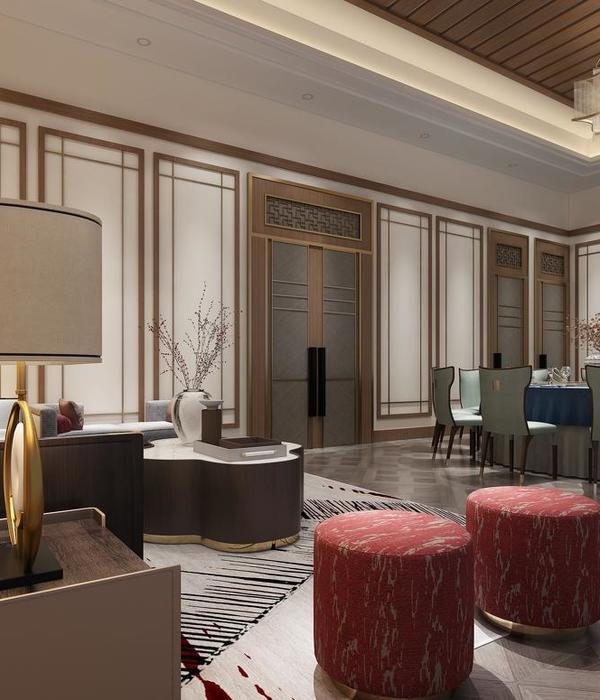▼视频,video
Pizza 4P’s创始人Yosuke Masuko于2011年在越南创办了Pizza 4P’s,提供自制奶酪制作而成的正宗披萨,并秉承着日本人的待客之道「发自内心的款待,让顾客得到宾至如归的感受!」作为该品牌在柬埔寨金边的首店,Red Design的设计灵感来自于新高棉建筑,在中世纪发展的建筑风格中融合了现代主义元素并结合了柬埔寨本土的语言。
Pizza 4Ps founder Yosuke Masuko established Pizza 4P’s in Vietnam in 2011, offering authentic pizza made with house-made cheese and served with the spirit of omotenashi, the considerate and compassionate mindset of Japanese hospitality. For the brand’s first location in Cambodia, located in Phnom Penh, Red Design created a concept which drew inspiration from New Khmer Architecture, the mid-century architectural movement which blended elements of the Modern Movement with the Cambodian vernacular.
▼餐厅概览,overall view ©Luke Ding
除了对传统建筑的认同,设计思考也同步展望未来。Red Design面临的挑战是为Pizza 4P’s打造一间“零废弃物”的餐厅,并与柬埔寨当地的创新的回收公司和制造商合作,思考在每一环节都能通过减少、再利用和回收的行动来消除过多的垃圾与厨余的浪费。将诗意般的概念与可持续材料的实用主义相结合,创造了一个引人入胜的故事,在客户旅程的不同时刻展现自己。
As well as nodding towards aspects of heritage architecture, the design also looked to the future. Pizza 4P’s challenged Red Design to create a Zero-Waste restaurant, aiming to eliminate waste through the actions of reduce, reuse, and recycle, all made possible through a series of partnerships with innovate Cambodian recycling companies and makers. The poetry of the conceptual idea combines with the pragmatism of the sustainable approach to materials to create a compelling story, one which reveals itself at various points in the customer journey.
▼诗意般的概念与可持续材料的实用主义相结合,the poetry of the conceptual idea combines with the pragmatism of the sustainable ©Luke Ding
新高棉建筑的主要特点之一是对结构的表达,最典型的就是使用混凝土来创造了一种节奏感与光和影的相互作用。我们将这种设计结构重新诠释在餐厅的内部空间,这样的设计不仅能在空间中传递一种彰显身份和感官上的凝聚,还能将“零废弃物”的理念在不影响客户用餐下来进行。
One of the main characteristics of New Khmer Architecture is the expression of assertive structures, typically in concrete, which create a sense of rhythm and an interplay of light and shadow. We interpreted this assertive structure to create an expressive framework for the building building façade and interior of Pizza 4P’s Phnom Penh. This structure delivers a robust identity and a sense of cohesion within the space; a framework within which the Zero-Waste principles can we explored at a smaller scale and in a way that doesn’t detract from the dining experience.
▼使用混凝土来创造节奏感与光和影的相互作用,creating a sense of rhythm and an interplay of light and shadow by concrete ©Luke Ding
▼用餐区一角,a corner of dining area ©Luke Ding
▼聚会长桌,party table ©Luke Ding
从客户与空间产生的第一个互动开始,就可以明显感受到可循环原则:入口的黄铜标识是由当地工匠Andkow&Co用熔化的柬埔寨炸弹和空弹壳制作而成。代表了“零废弃物”纯粹的理念,也是Pizza 4P’s的愿景——“让世界为和平而微笑”的诗意展示。其他由可回收元素制成的店铺元素包括了餐厅家具。我们与当地的塑料回收专家Plastic People还有GOMI Recycle合作,研发了构成椅子和长椅底座的复合型塑料;这种蓝色材料成为反复出现的品牌元素贯穿了整个空间。
The principle of recycling is evident from the customer’s first interaction with the space: the brass entrance signage is made from melted down Cambodian bombs and empty cartridge cases by local craftspeople Andkow&Co. As well as providing a pure representation of the Zero-Waste approach, this is an evocative demonstration of the Pizza 4P’s vision to ‘Make the World Smile for Peace’. Further store elements made from recycled elements include the restaurant furniture. We teamed up with local plastic recycling specialists Plastic People and GOMI Recycle to create the composite plastic material which forms the chairs and banquette base; this blue material becomes a recurring brand element throughout the space.
▼由可回收元素制成的餐厅家具,the restaurant furniture made from recycled elements ©Luke Ding
▼由用餐区望向吧台,view to the counter from the dining area ©Luke Ding
▼吧台,the counter ©Luke Ding
回收利用的概念也运用在了吧台台面,台面是由收集的玻璃瓶制作而成,矮墙则是由重复使用的钢筋制成。创建实体餐厅空间当然只是议程的一部分:餐厅的日常运营如何实现零废弃物的理念也是同样重要的一个层面。我们选择设置了一个“车库”——一个回收枢纽——作为空间的中心。 这个空间提供了20种不同类型的回收容器供客户使用,目的是使回收过程尽可能透明。除了整理包装以便回收,车库还储存了烹饪过程中产生的食物垃圾和顾客的剩饭剩菜。 这些垃圾被分类到不同的容器中,并以不同的方式回收利用。
Also recycled is the counter top, which is made from collected glass bottles, and partitions formed from reused steel rebar. Creating the physical dining space is of course only part of the agenda: the day-to-day restaurant operations are an equally important facet of the zero-waste approach. We chose to locate the ‘Garage Room’ – a recycling hub – in the heart of the space. This room offers receptacles for 20 different types of recycling and is accessible to the customer, the intent being to make the recycling process as transparent as possible. In addition to collating packaging for recycling, the Garage Room also stores food waste from both the cooking process and customer leftovers. This is sorted into various containers and recycled in different ways. For example, Pizza 4P’s leftover pizza dough is fed to crickets, which produce organic fertilizer and even a dried cricket snack.
▼吧台台面由收集的玻璃瓶制作而成,the counter top is made from collected glass bottles ©Luke Ding
▼披萨制作过程,pizza making process ©Luke Ding
▼材质细部,details ©Luke Ding
Pizza 4P’s金边店是经过精心设计打造,也是对可持续发展新思维的一次实验。通过与当地企业合作,提供真正的餐饮浪费解决方案,整个过程透明可视化完全不影响客户的用餐体验,此餐厅也成为金边地区可持续餐馆发展的典范。
The Pizza 4P’s Phnom Penh store is both a formal design exercise and an experiment in new thinking about sustainability. By partnering with local businesses which offer real cradle-to-grave solutions to waste, and by making this process transparent, inclusive and even poetic, it is our hope that the store offers a captivating customer experience while becoming an exemplar in sustainable restaurant development in the region.
▼平面图,layout plan ©Red Design
▼天花节点图,ceiling detail ©Red Design
{{item.text_origin}}

